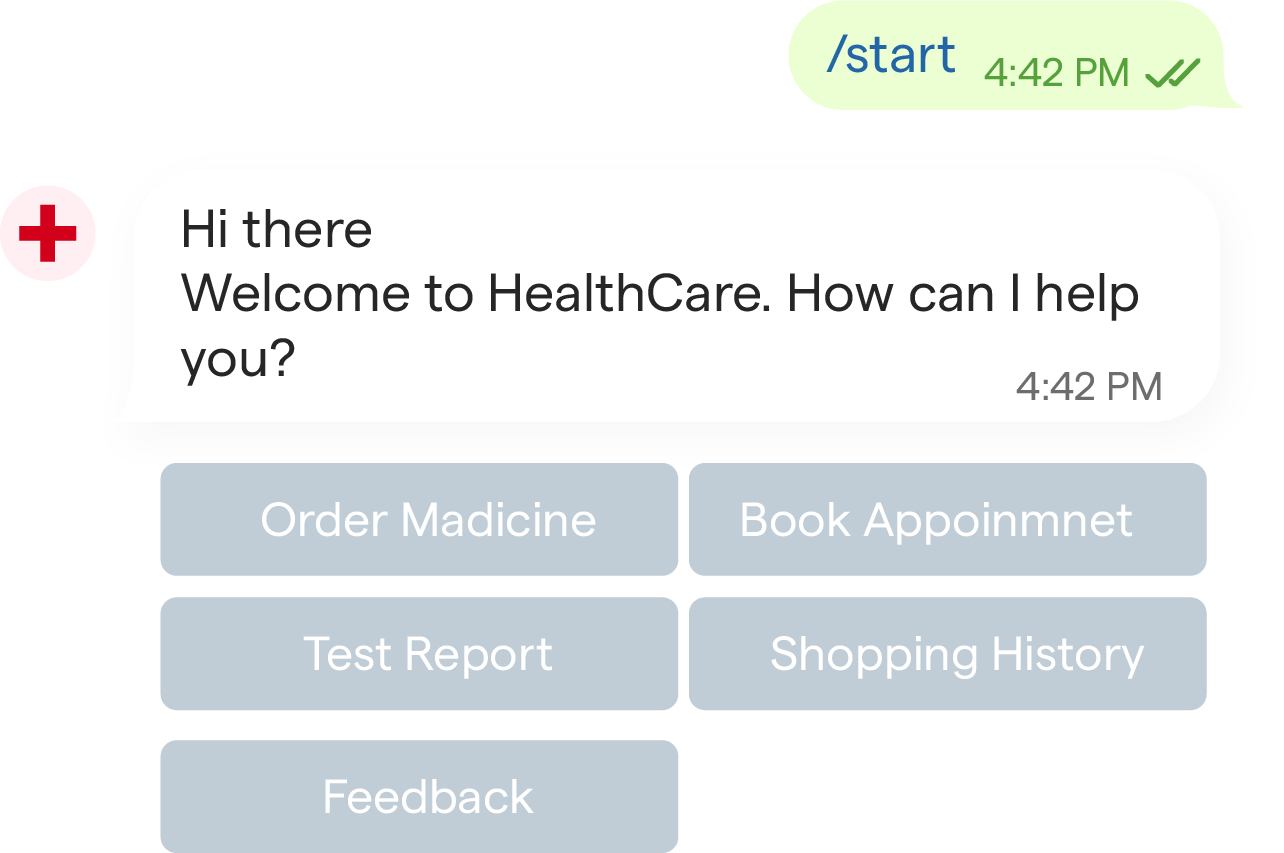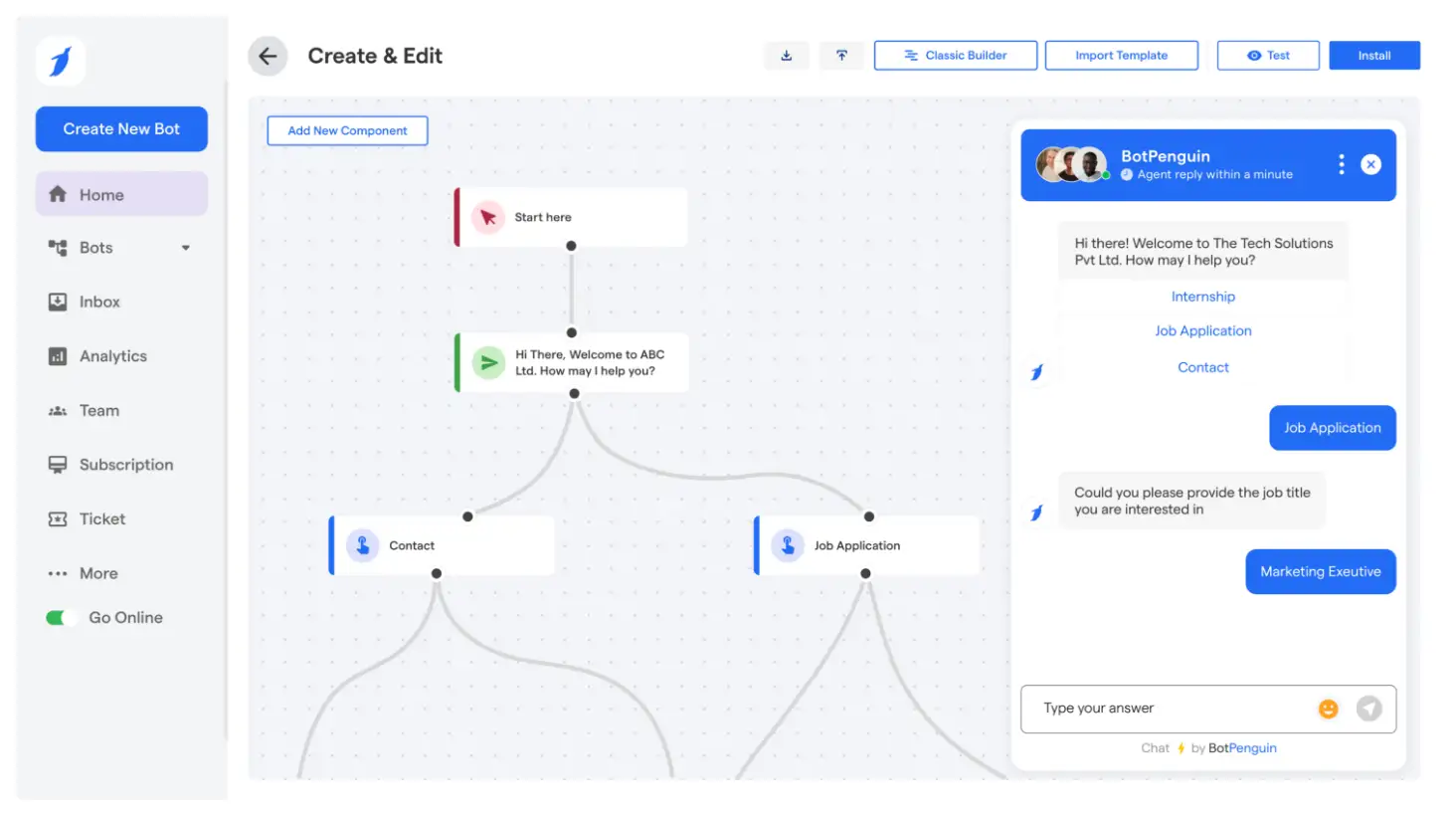Introduction
Telegram has emerged as a hugely popular messaging platform, with over 700 million active users as of 2022 (Telegram, 2023). This significant user base presents invaluable opportunities for brands and developers to deploy AI-powered bots that engage and assist customers.
By 2025, over 22% of the world’s population is projected to use messaging platforms to interact with businesses like retailers, financial organizations and healthcare providers (Statista, 2020).
To maximize the visibility and usage of bots within this booming ecosystem, developers must optimize core areas – discoverability, interaction design and continuous improvement.
For discoverability, leveraging official bot directories, promotions via broadcast channels and social media help drive awareness.
Intuitive interfaces with support for payments, multimedia and analytical triggers enable deeper ongoing conversations. Finally, monitoring usage metrics and user feedback is key to refine bot experiences.
With the demand for automated and personalized services, following Telegram’s updated 2022 bot guidelines, a solid framework sets up bots for success.
This article explores specific strategies in each area that can help maximize Telegram bot reach and engagement.
What is a Telegram Bot?
Telegram bots are AI-powered conversational agents designed to interact with users on the Telegram messaging platform.

They can automate tasks, provide information, entertain, and offer various services. With their wide reach and user-friendly interface, Telegram bots have become a popular means of engaging with audiences.
Importance of Interaction in Telegram Bots
Interaction is the lifeblood of any successful Telegram bot. It is the key to creating an engaging and satisfying user experience.
Increased interaction leads to higher user satisfaction, better retention, and ultimately, the achievement of your bot's goals.
How to Deploy Your Telegram Bot for Maximum Interaction?
In this section, we’ll see the process of deployment of telegram bots for maximum interaction.
Understanding Your Audience

To maximize interaction, you must understand your audience. Identify who your target users are based on demographics, interests, and behavior patterns.
This knowledge will help tailor your bot's content and features to their specific needs and preferences.
Analyzing User Needs and Preferences
Conduct surveys, analyze user feedback, and study user behavior to gain insights into what your audience wants. Understand their pain points, desires, and expectations.
This understanding will guide you in designing conversations that resonate with your users and encourage active engagement.
Setting Clear Objectives
Clearly define your bot's purpose and the goals you want to achieve. Is it providing customer support, delivering news updates, or offering a gaming experience?
Defining a clear purpose will help you align your bot's functionality and content to maximize interaction.
Establishing Key Performance Indicators (KPIs)
.png)
Set measurable KPIs to track the success of your bot. These can include metrics like user engagement, retention rate, completion rate of tasks, or conversion rates.
Regularly monitor these KPIs to assess the effectiveness of your bot's deployment strategies and make data-driven improvements.
Designing Engaging Conversations
Give your bot a distinct personality that aligns with your brand and resonates with your target audience.
A persona adds a human touch, making interactions more relatable and engaging. Inject humor, empathy, and creativity into your bot's responses to create memorable experiences
Creating a Natural and User-Friendly Dialogue Flow

Design conversations that flow naturally, mirroring real-life interactions. Avoid lengthy monologues and focus on concise and relevant messages.
Break down complex tasks into smaller steps and guide users through each stage, ensuring a smooth and intuitive experience.
Utilizing Rich Media and Interactive Elements
Enhance user engagement by incorporating rich media such as images, videos, and GIFs into your bot's responses.
Use interactive elements like quick replies, polls, and quizzes to encourage user participation and make interactions more dynamic and enjoyable.
Leveraging Telegram Bot Features

Take advantage of inline bots and commands to provide quick access to information and services.
Inline bots can deliver instant results in chat threads, while commands trigger specific actions when users input predefined keywords. These features enable seamless interaction and enhance user convenience.
Maximizing the Potential of Inline Buttons
Utilize inline buttons to offer users choices and actions within conversations.
From simple Yes/No options to complex multi-step processes, inline buttons empower users to interact with your bot effortlessly. Make them visually appealing and clearly labeled to attract attention and encourage clicks.
Incorporating Custom Keyboards and Reply Markup
Custom keyboards and reply markup options allow users to interact with your bot through predefined buttons. Use them to provide structured responses or present menu-like options.
These features simplify user input and streamline interactions, leading to a more engaging experience.
Implementing Context Awareness

Make your bot context-aware by remembering user preferences, previous interactions, and relevant information.
This personalization creates a sense of continuity and enhances the user experience. Leverage user data to tailor responses and recommendations based on their individual needs and preferences.
Personalizing Responses and Recommendations
Customize your bot's responses and recommendations based on user data.
Use personalized greetings, recommendations based on past interactions, or tailored content suggestions to create a sense of exclusivity and increase user engagement. Make users feel understood and valued.
Utilizing Natural Language Processing (NLP)
Leverage Natural Language Processing (NLP) techniques to enhance your bot's language understanding capabilities.
NLP allows your bot to comprehend user intents, extract key information, and respond appropriately. It enables more sophisticated and interactive conversations, improving user satisfaction.
Enabling Smart Responses and Suggestions

Implement smart response systems that utilize NLP to generate intelligent and contextually relevant replies.
Smart responses can include suggested actions, automatic completion of user queries, or predictive suggestions based on user input. These features make interactions faster, smoother, and more engaging.
Accessing External Data Sources
One way to enhance your Telegram bot's capabilities is by integrating external APIs. These APIs provide access to a wealth of data and services that can enrich the user experience.
Whether it's fetching weather information, retrieving news updates, or accessing third-party platforms, the possibilities are endless.
Suggested Reading:
Exploring the Safety of Telegram Bots: A Comprehensive Guide
Enriching User Experience with External Services
Think beyond traditional bot functionalities! By incorporating external services, you can take your bot to new heights.
Imagine enabling users to order food, book flights, or even play interactive games, all within the Telegram platform. These services not only make your bot more engaging but also provide immense value to your users.
Testing and Iterating

Building a successful bot is an iterative process. To ensure its effectiveness, it's crucial to conduct user testing and gather feedback.
This allows you to identify pain points, understand user preferences, and make necessary improvements. Embrace feedback as an opportunity to refine your bot and create a user-centric experience.
Conducting User Testing and Feedback
Invite a diverse group of users to test your bot and provide feedback. Their insights can reveal usability issues, unexpected scenarios, or feature requests that you might have overlooked.
Emphasize simplicity, intuitive design, and efficient user flows to make your bot user-friendly and accessible to all.
Continuous Improvement through Iteration
Once you have collected feedback, it's time to iterate. Analyze the data, identify patterns, and prioritize enhancements.
Iterative development allows you to refine your bot over time, adding new features, optimizing performance, and addressing user concerns.
By continuously improving your bot, you keep it fresh, relevant, and aligned with user expectations.
Deploying Your Telegram Bot

You've built a fantastic bot, and now it's time to deploy it to the world. Let's explore the crucial steps involved in deploying your Telegram bot effectively.
Choosing a Hosting Platform
Selecting the right hosting platform is vital for a smooth deployment process. Consider factors like scalability, security, ease of use, and cost when choosing a hosting provider.
Options like Heroku, AWS, or DigitalOcean offer reliable and flexible solutions that cater to different requirements.
Setting up Webhooks for Real-Time Interaction
To ensure real-time interaction and seamless communication with your bot, you need to set up webhooks. Webhooks allow your bot to receive updates from Telegram instantly.
By configuring webhooks correctly, you enable your bot to respond swiftly to user actions and maintain a dynamic conversation flow.
Promoting Your Telegram Bot

Deploying your bot is just the beginning. To maximize interaction, you need to promote it effectively and reach your target audience.
Let's explore some strategies to make your bot stand out.
Creating a Compelling Bot Description
Craft an attention-grabbing and concise bot description that highlights its unique features and value proposition. Make sure it reflects your bot's personality and communicates its purpose.
A well-crafted description helps users understand what your bot offers and entices them to give it a try.
Engaging Users through Social Media and Channels
Leverage the power of social media and Telegram channels to engage with your audience. Share updates, announce new features, and initiate discussions around your bot's topic.
Measuring Success and Optimization

To gauge the effectiveness of your bot and drive continuous improvement, you need to measure its success and optimize accordingly.
Monitoring Key Metrics and Analytics
Track key metrics like user engagement, retention rates, conversion rates, and user feedback. Analyze this data to identify areas of improvement and gain insights into user behavior.
Tools like Google Analytics and Telegram Bot API provide valuable analytics to help you make informed decisions.
Implementing Feedback Loops for Continuous Optimization
Actively seek feedback from your users through surveys, polls, or direct communication channels. Listen to their suggestions, concerns, and feature requests.
By implementing a feedback loop, you demonstrate your commitment to enhancing user experience and building a loyal user base.
Conclusion
As messaging platforms continue their meteoric rise, leveraging the potential of bots on channels like Telegram is becoming imperative for brands.
With advanced segmentation, multimedia and payments capabilities, Telegram provides the perfect launchpad for immersive customer experiences via bots.
Specifically for developers, further optimizing discoverability by tapping into Telegram’s vast decentralized ecosystem can expand bot reach exponentially.
Over 42% of Telegram’s current users originate from Eastern Europe and Central Asia, representing an engaged demographic (DataReportal, 2022). Additionally, enhancing interactivity using ML-driven triggers and richer interfaces will boost engagement.
As Capgemini notes, over 64% of consumers expect chatbots to provide a full-service experience including purchases and after-sales support (Capgemini, 2020).
Solutions like BotPenguin enable creating feature-rich bots with minimal coding, while integrated analytics empower data-driven iteration.
With versatile no-code platforms like BotPenguin, developers now have immense potential to build boundaryless next-gen bot. This experience is essential as messaging apps continue to reshape consumer behavior and business operations worldwide.
Suggested Reading:
WhatsApp Bot vs Telegram Bot: Which is better?
Frequently Asked Questions (FAQs)
How do I deploy my Telegram bot for maximum interaction?
To maximize interaction, start by hosting your bot on a reliable server. Platforms like Heroku or AWS provide scalable solutions. Ensure your bot is well-designed with engaging content and functionalities, encouraging users to interact frequently.
What role does user engagement play in deploying a Telegram bot successfully?
User engagement is crucial. Implement features that prompt regular interactions, such as personalized responses, quizzes, or notifications. Regularly update your bot with new content to keep users interested and engaged over time.
Are there specific tools or frameworks recommended for deploying Telegram bots?
Platforms like Python-Telegram-Bot or Telegraf for Node.js streamline bot development and deployment. Choose a framework that aligns with your programming language preferences and project requirements for a seamless deployment process.
How can analytics enhance the deployment strategy of a Telegram bot?
Integrate analytics tools like Telegram Bot API or custom tracking to monitor user interactions. Analyzing data on user behavior helps refine your bot's features, ensuring it evolves to meet user preferences and maximizes engagement over the long term.

